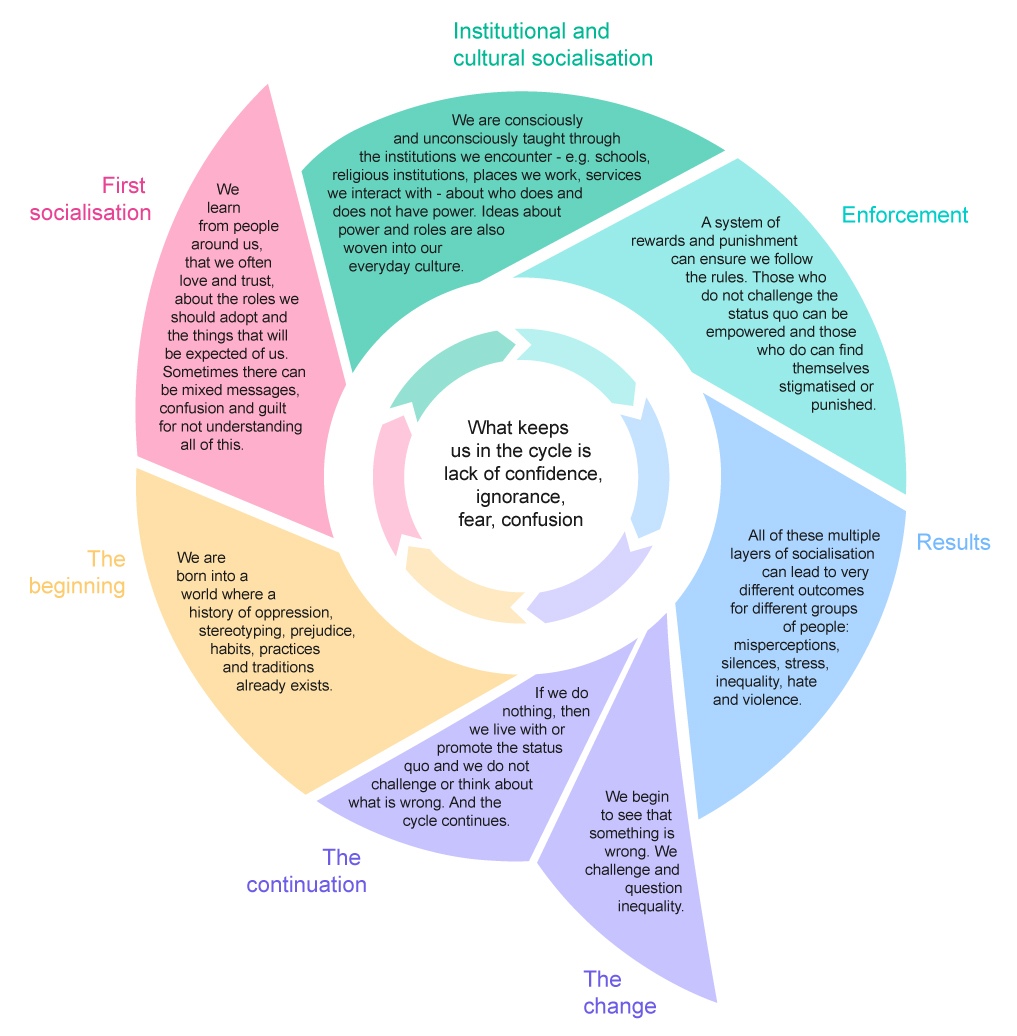
Graphic showing the cycle of socialisation
Click to read the image transcript
The beginning
We are born into a world where a history of oppression, stereotyping, prejudice, habits, practices and traditions already exists.
First socialisation
We learn from people around us, that we often love and trust, about the roles we should adopt and the things that will be expected of us. Sometimes there can be mixed messages, confusion and guilt for not understanding all of this.
Institutional and cultural socialisation
We are consciously and unconsciously taught through the institutions we encounter – e.g. schools, religious institutions, places we work, services we interact with – about who does and does not have power. Ideas about power and roles are also woven into our everyday culture.
Enforcement
A system of rewards and punishment can ensure we follow the rules. Those who do not challenge the status quo can be empowered and those who do can find themselves stigmatised or punished.
Results
All of these multiple layers of socialisation can lead to very different outcomes for different groups of people: misperceptions, silences, stress, inequality, hate and violence.
The change
We begin to see that something is wrong. We challenge and question inequality.
The continuation
If we do nothing, then we live with or promote the status quo and we do not challenge or think about what is wrong. And the cycle continues.
The core
What keeps us in the cycle is lack of confidence, ignorance, fear, confusion.